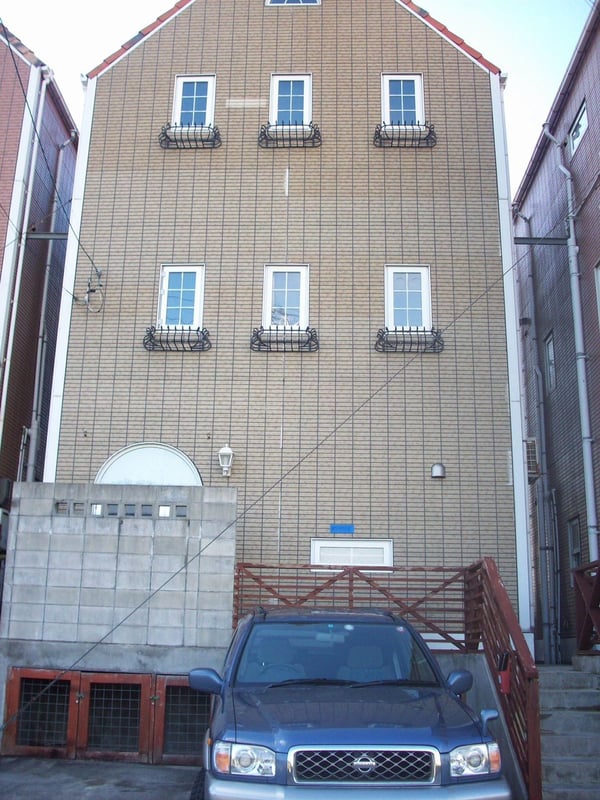Tips for Living On or Off Base in Okinawa
If this is your first time moving to Okinawa, you'll undoubtedly have questions. Japan can be a challenging overseas PCS location and requires a significant effort that's, thankfully, countered by an incredible lifestyle when you arrive.

Okinawa Military Housing
The majority of those who receive orders to Okinawa (regardless of branch affiliation) are required to live on base, if military housing is available. Those living on base but who want the authentic Japanese experience can submit an Exception to Policy (ETP) for approval to move off base.
The Air Force manages the Military Housing Office (MHO). All service members are required to visit the office to verify eligibility for Temporary Lodging Allowance (TLA) and receive guidance on housing options.
 Kadena Air Base housing. Photo from af.mil
Kadena Air Base housing. Photo from af.mil
Military housing renovations are underway throughout Okinawa. Updates include heating and air conditioning improvements, built-in dehumidifiers, and kitchen and bathroom renovations. Additionally, the military is working to give land back to Japan. Both projects are limiting on-base availability and forcing more families to live off base.
Primary U.S. Military Installations in Okinawa:
- Camp Courtney
- Camp Foster
- Camp Hansen
- Camp Kinser
- Camp Lester
- Camp McTureous
- Camp Schwab
- Camp Shields
- Kadena AFB
- MCAS Futenma
- Torii Station
Okinawa Off-Base Living
As you can expect, June through September reflect peak PCS months, resulting in a shortage of off-base housing, particularly in the "American Style" category.
 Photo courtesy Heather Whitfield.
Photo courtesy Heather Whitfield.
The process for off-base housing in Okinawa:
Military housing requires a 98% occupancy rate before allowing incoming families to live off base or releasing tenants from their military housing contracts if they’re already established on base. If your decision to move off base progresses, an ETP is required and involves documentation from the housing director and the active duty member's command.
After the paperwork is submitted, a base briefing is required. The military member then works with the MHO to find a new home in a local community. The MHO inspects and works out an appropriate price for the rental.
Most housing agencies in Okinawa charge an agency fee (usually 50% of one month's rent), a security deposit, and the first and last month's rent.
If moving from on-base housing to off, or on-base to on-base, the service member will pay for moving expenses. While trucks are hard to come by, moving companies in Okinawa are more affordable than those in the U.S.
Check out the Air Force’s guide to off-base housing for more information about the process.
Renters often seek apartments near the popular south end of the island. The Sunabe Seawall touts breathtaking views and access to restaurants and bars. Walkable playgrounds, coffee shops, and grocery stores elevate the location’s desirability. Apartment hunters in this area should expect difficulty finding vacancies. If a property is available, it will be on the small side, likely without a dishwasher or microwave.
Depending on where the service member works, Yomitan is worth considering for larger families as rentals offer more square feet and are more affordable in this area. The location is further away, about twenty minutes from the well-known Kadena Air Base, but is within reason for those stationed at Torii Station and even Camp Foster if you don’t mind a longer commute.
Military Kids' Schooling in Okinawa
Most kids whose families live in Okinawa attend DODEA schools. There are thirteen in total: eight elementary, three middle, and two high schools. School registration occurs in the main office of the school where your child is zoned.
Some families choose to send their children to local Japanese or international schools, but the Japanese school year differs from what most Americans are used to. Local Japanese schools start in April, continue through the next March, and schedule three vacation breaks during the year.
To begin your research for a local school, Okinawa Hai has a School Information Index to get started. Military families highly encourage newcomers to talk with families who already live in Okinawa to get their advice and suggestions before enrollment.
Settling into Okinawan Life
Military families stationed in Okinawa often comment on how kind and helpful local citizens are, but some locals are unhappy with the American presence here. Be aware of regular protests near military bases and drive past politely.
For more guidance on housing, pet travel, and school decisions, visit Welcome to Okinawa.
 Photo courtesy Heather Whitfield.
Photo courtesy Heather Whitfield.
Tips from military spouses stationed in Okinawa:
- It’s hot and humid, no way around it! It will take time, but you’ll acclimate and expand your shorts and bathing suit collection.
- Families rave about high-quality playgrounds found all over Okinawa. They are one of the amenities most missed after returning to the U.S.
- Be clear about the lease language regarding pets living both on and off base before arrival. There are various restrictions on pets throughout the island.
- Although many locals speak English, it's still useful to have a translation app for smoother communication.
- Try as many new cuisine items and cultural activities as possible. You’ll never know what you’re missing out on if you don’t!
- Don’t be afraid to shop at local grocery stores. They are less expensive than the commissaries on base and offer highly quality produce.
- Traveling throughout the region is easy and inexpensive. Military families can visit sites in mainland Japan, South Korea, Taipei, Thailand, the Philippines, and Indonesia. Make travel a habit early, and the scariness of foreign languages and transport services wears off.
- Several military spouses recommend reading Okinawa Hai and Okinawa Living well before your departure for up to the minute events and know-how for island living.
Don’t let the distance over the ocean to Japan intimidate you! MilitaryByOwner has more information on Okinawa and general overseas PCS information to guide the transition.





